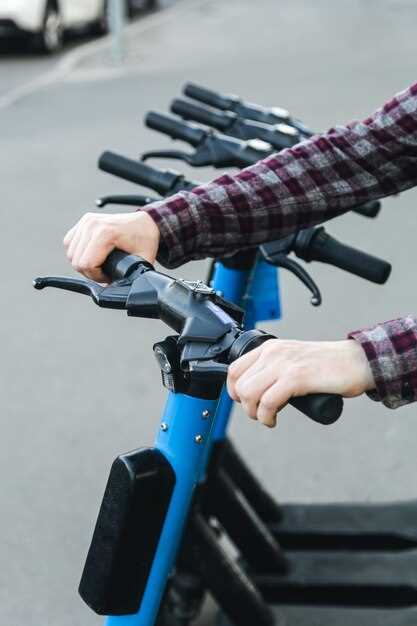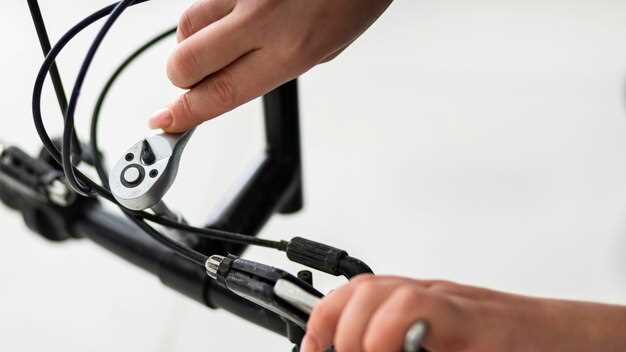
In the world of cycling, the handlebar serves as a crucial connection between the rider and their bike, significantly impacting the overall riding experience. When it comes to achieving an optimal position, customization of the handlebar can lead to improved comfort, control, and performance. Riders often underestimate the importance of adjusting their handlebars to suit their individual needs and preferences.
By tailoring the handlebar to fit their unique riding style and anatomy, cyclists can alleviate discomfort and fatigue during long rides. A properly positioned handlebar not only enhances the rider’s comfort but also contributes to better handling and maneuverability, allowing for a more enjoyable journey. Factors such as height, width, and angle play a vital role in determining how a rider interfaces with their bike, making it essential to fine-tune these elements for maximum effect.
Moreover, comfort in cycling goes beyond mere adjustments; it encapsulates the entire riding experience. A well-customized handlebar can help distribute weight more evenly across the body, improving posture and reducing the risk of injury. Discussions around handlebar customization often highlight how even minor tweaks can lead to significant improvements, helping riders enjoy every moment spent on the road or trails.
Choosing the Right Handlebar Width for Your Riding Style

When it comes to optimizing your cycling experience, selecting the correct handlebar width is crucial. The width of your handlebars significantly affects your position on the bike, which in turn impacts your comfort and control. A proper handlebar width aligns with your shoulder width, allowing for a more natural grip and reducing fatigue during rides.
For those who prefer a more aggressive riding style, such as road racing, narrower handlebars might be beneficial. They offer improved aerodynamics and allow for a more streamlined position. This configuration can help reduce wind resistance, enabling greater speed. However, riders should balance the narrow width with comfort, as overly tight positioning can lead to strain in the upper body.
Conversely, if your riding style leans towards casual commuting or mountain biking, wider handlebars are recommended. These provide better leverage and stability, especially on uneven terrain. A wider grip allows for more control over the bike, enhancing your ability to navigate through obstacles and sharp turns. Additionally, they help distribute weight more evenly, minimizing discomfort during long rides.
It’s important to consider your body type and personal preferences when choosing handlebar width. A simple method to find the right fit is to measure the distance between your shoulder joints. This measurement can serve as a guideline for selecting handlebars that optimize your position and enhance overall comfort while riding.
Lastly, testing various widths can yield valuable insight into what feels best for you. Many bike shops allow riders to test different handlebar setups, which can aid in making an informed decision. Ultimately, the goal is to find a handlebar width that complements your riding style while ensuring a comfortable and enjoyable cycling experience.
Adjusting Handlebar Height for Optimal Rider Position

Ensuring the correct handlebar height is crucial for achieving an optimal rider position. Proper adjustment can enhance comfort and improve overall riding efficiency. The ideal height allows for a natural arm bend while maintaining a straight back, reducing strain on the shoulders and hands.
To begin adjusting your handlebars, first, determine your preferred riding style. A lower handlebar height is often suited for more aggressive riding positions, while a higher setting tends to be more comfortable for casual or upright riding. This distinction is particularly significant for long-distance rides, where comfort becomes essential.
Next, use a measuring tool to assess the current height of your handlebars. Most handlebar stems allow for height adjustments; check if yours has the necessary components. Loosen the appropriate bolts and either raise or lower the handlebars to your desired height. Once repositioned, re-tighten the bolts securely to ensure safety while riding.
After making adjustments, take the bike for a test ride. Pay attention to your body position and any discomfort that may arise. It may take a few iterations to find the perfect alignment that suits your ride. Remember, the goal is to create a balance between control and comfort, which will enhance your overall biking experience.
Selecting Handlebar Shape to Reduce Fatigue
The shape of the handlebars plays a crucial role in determining the overall comfort of the rider during long rides. A well-chosen handlebar shape can significantly reduce fatigue by providing better support and positioning for the rider’s hands and arms. Different shapes cater to varying riding styles, preferences, and ergonomic needs.
When selecting the handlebar shape, consider the rider’s usual posture. A more upright position typically benefits from wider, higher handlebars, which allow for better weight distribution and less strain on the back and shoulders. Conversely, for riders who adopt a more aggressive, aerodynamic position, flatter and narrower handlebars may be preferable, reducing wind resistance and improving control.
Another aspect to consider is the reach and drop of the handlebars. A shorter reach minimizes the extension of the arms, reducing strain and fatigue over long distances. Similarly, the drop provides options for multiple hand positions, allowing the rider to change postures and relieve pressure on different muscle groups. Riders should experiment with various shapes to find what feels most comfortable for their specific riding style.
Finally, testing different shapes during rides can help determine which option best matches the rider’s needs. Proper selection not only enhances comfort but also contributes to improved performance by allowing the rider to maintain optimal control and power distribution while riding.





